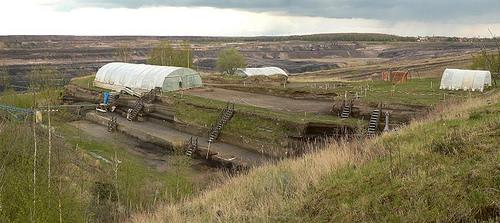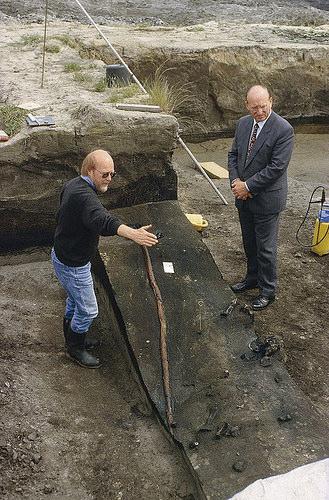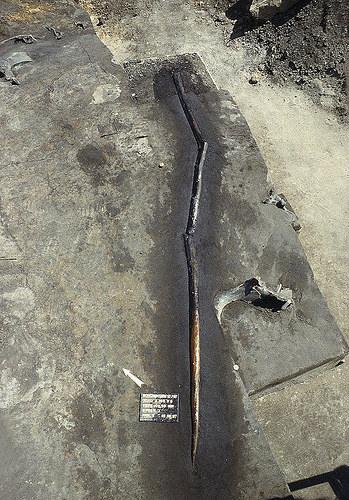Source - http://popular-archaeology.com/issue/june-2013/article/new-insights-on-the-wooden-weapons-from-the-paleolithic-site-of-schoningen
 The Schöningen excavation site. Tangelnfoto, Wikimedia Commons
The Schöningen excavation site. Tangelnfoto, Wikimedia Commons
The Paleolithic site of Schöningen in north-central Germany is famous for the earliest known, completely preserved wooden weapons or artifacts uncovered there by archaeologists under the direction of Dr. Hartmut Thieme between 1994 and 1998 at an open-cast lignite mine. Deposited in organic sediments at a former lakeshore, they were found in combination with the remains of about 16,000 animal bones, including 20 wild horses, whose bones featured numerous butchery marks, including one pelvis that still had a spear protruding from it. The finds are considered evidence that early humans were active hunters with specialized tool kits as early as 300,000 or more years ago. In a recent study, a team of scientists from Germany and Switzerland document results of an ongoing analysis of the nine spears, one lance, a double pointed stick, and a burnt stick dating to the Holsteinian, c. 300 kyr. Macroscopic and microscopic analyses, as well as studies of thin sections, have now contributed to a better understanding of the manufacture of the wooden weapons.
 Spear 6 in situ. P. Pfarr NLD, Wikimedia Commons
Spear 6 in situ. P. Pfarr NLD, Wikimedia Commons
 Spear 8 in situ. P. Pfarr NLD, Wikimedia Commons
Spear 8 in situ. P. Pfarr NLD, Wikimedia Commons
In general, the researchers report that the spears are extremely well-preserved and show no or little sign of taphonomic alteration, although some of the weapons are broken and parts were slightly moved, likely through water action. Most significantly, the excellent preservation conditions have provided considerable information on the operational sequence of production. Specifically, the hunters selected thin trunks of spruce or pine and initially stripped off the bark. Traces of cutting, scraping, and smoothing can be observed on the spear surfaces in detail. In the case of one of the artifacts, designated 'spear X', repeated use of the weapon is implied by apparent re-sharpening of the tip.
The researchers also suggest that analyses of the wood anatomy provides information on climatic conditions at the time of production, and contribute to a better understanding of the development of the site.
The detailed study report is published as an article in press in the Journal of Human Evolution.